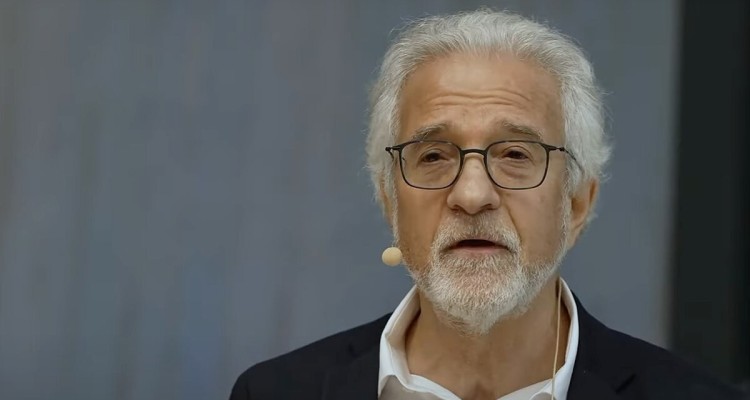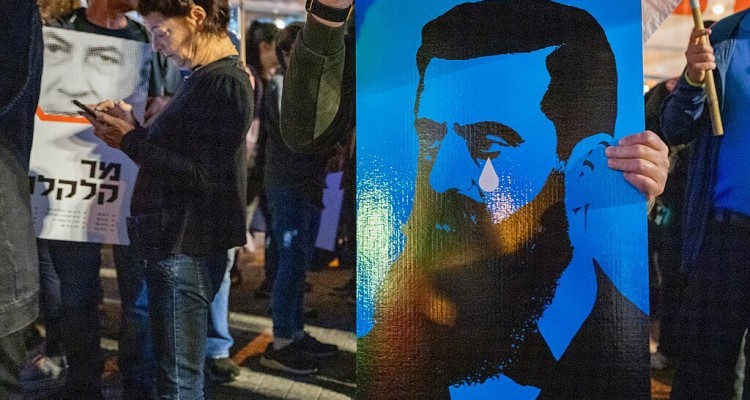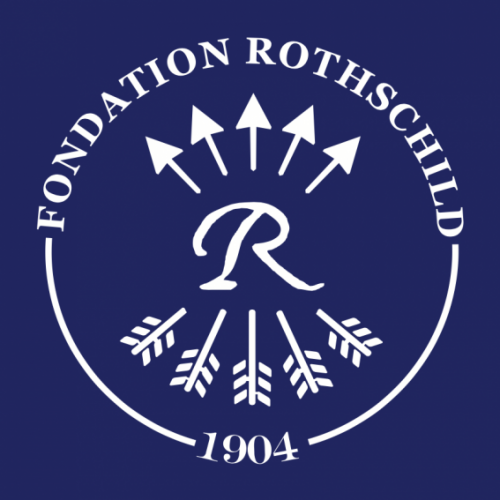The “Diaspora” collection, founded by Roger Errera in 1971 at the French publishing house Éditions Calmann-Lévy, has been decisive in more than one way for the French public in general, and for French Jews in particular. For non-Jewish French people, it opened the best possible access to Judaism. For the Jews themselves, it represented an invaluable aid for re-understanding their diasporic situation after the Holocaust. By sketching a portrait of Roger Errera, State Councillor and French Jew who judged the State in its possible excesses, Bruno Karsenti endeavors to bring out the new meaning of this diasporic position in post-Holocaust Europe. If persevering in exile is the characteristic of the Jewish people, and if this condition is modified without being vitiated by the existence of the State of Israel, then it is a singular political position that emerges.
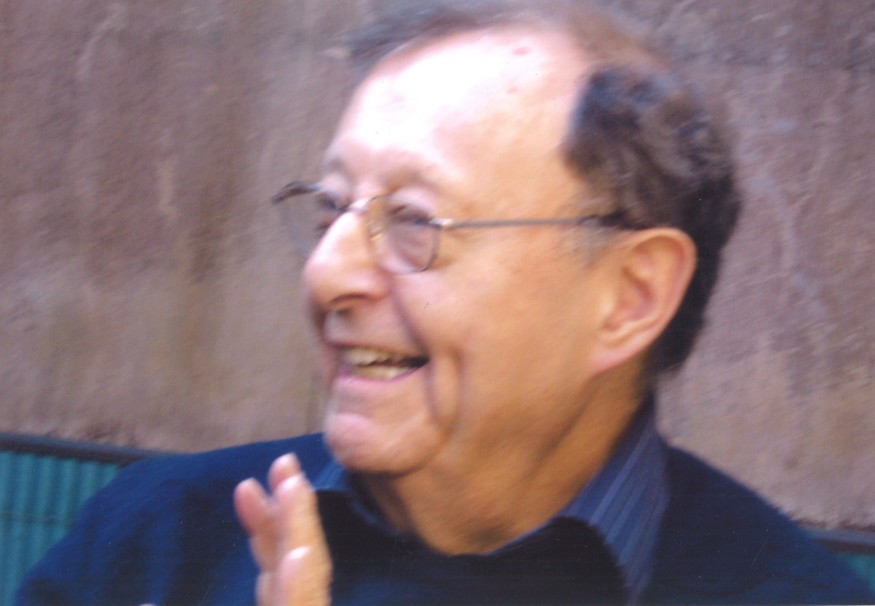
The great book on Vichy policy concerning the Jews was the work of two historians, neither of whom was French, nor even European: Robert Paxton is American, Michael Marrus Canadian. Vichy and the Jews was published simultaneously in French and English in 1981. The second edition, released in 2015, contains new elements but no major corrections, because if studies on Vichy have developed considerably over the last few decades, the authority of the book has remained intact, the essence of its conclusions remaining undisputed. They are incontrovertible for the French state, which is shown to have anticipated German expectations, to have conceived and promulgated the racial laws against Jews itself, to have pushed for deportation as early as 1940, when the Germans did not yet want it, and to have provided the human, technical and logistical means that the Germans lacked to ensure its implementation from 1942 onward. The book shows that when the arrests began, French public opinion was rather unfavorable to them, so that rescues multiplied in the country. It also shows that this did not stop Vichy, whose persecution policy continued unabated until the end of the regime.
The writing of the book took 10 years. It was fraught with difficulties, and was almost interrupted, the investigations necessary for its realization being delicate and arduous, carried out in unfavorable conditions and in a climate of manifest reticence. A tacit agreement, shared in the different strata of society, had been established not to lift the veil on this part of national history. Once the criminal policies of Vichy were exposed, it was no longer tenable. The tear in the republican fabric appeared in full view, in contrast to the skillful suturing carried out by de Gaulle since the Liberation.
A new era of historiography thus began, a sign of a notable shift in the French collective consciousness. However, it was not to Paxton, a Vichy specialist, nor to Marrus, who joined him only along the way, that we owe the project of this book. It was Roger Errera, the director of the collection “Diaspora” at Calmann-Lévy. After having read Paxton’s first book on Vichy military forces, which was unpublished in French at the time, he contacted him in 1970 and convinced him to take up the project. He made him aware of the unjustifiable absence: nothing existed on the subject, and it was not from France, perhaps not even from Europe, that such a book could be written. In the process, he set the objectives, and submitted them to the historian as one would a “roadmap”: to determine the respective shares in what is known as the collaboration, to measure the exact role of Vichy in the anti-Jewish legislation and the policies that followed, to establish the responsibilities at all levels of the state apparatus and the administration. To do this, access to the French archives had to be forced somewhat, which he did. He renewed his support and his help, without respite, each time that doubt settled in. The stakes were clear: it was a matter of bringing the French state into line with its history, and thus raising French society to a higher degree of self-awareness, which it had refused to do for 25 years.
Unlike the authors, Errera was a French Jew who had direct experience of Vichy. Born in Paris in 1933, he survived the war with his family, fleeing the Germans and the French police. His parents, who had had their application for naturalization rejected in 1938, came from the ancient and once resplendent Jewish community of Salonika, which was completely destroyed by the Nazis in 1943.
The emigration to France of the families Errera and Montekio (the name of the maternal ancestry) took place between 1916 and the end of the 1920s, when Salonika had just come under Greek rule and the living conditions of the Jews, who were no longer protected by their status under Ottoman rule, had rapidly deteriorated. The history of the community of Salonika, which dates back to antiquity, is a singular microcosm of European Judaism in its many facets. The expulsions at the end of the Middle Ages and during the Renaissance had made it a preferred place of welcome for Jews of all origins, mainly Sephardim dispersed after the expulsion from Spain, but also Ashkenazim from Austria, Romania and Hungary. Thessaloniki was the hotbed of the Sabbatean episode in the seventeenth century – it was there that the most radical groups were formed, and that most of the crypto-Jewish sect of the Dunmeh remained, these Sabbateans determined to follow the pseudo-Messiah until his apostasy and conversion to Islam. The city became a center of Jewish enlightenment, producing a significant number of Maskilim who were interested in Western culture and dreamed of emancipation. The Jewish labor movement also flourished there.
If Judeo-Spanish, Ladino, was the language of choice in Salonika, the French language was also widely spoken there, mainly due to the schooling campaign led by the Alliance Israélite Universelle in the direction of the Eastern communities from the 1870s onwards. From this extraordinary cultural and political emulation came dazzling fruits. But anti-Semitism never disappeared, as regional political conflicts constantly fueled it, reaching a peak in the interwar period. Immigration to Europe, and especially to France, was then strong, driven by a dynamic of emancipation that had multiple and complex sources, since it referred to an already ancient and consolidated Jewish experience. This dynamic had one characteristic that must be emphasized: it drew its force from itself, from its own modernity, in short. This is a significant difference with other situations in the East, in particular with that of the Jews of Algeria, the Crémieux decree intervening in a colonial context where emancipation, in the form of French nationalization, was formulated as a gift from the metropole. As for the Jews who still remained in Salonika in 1940 (the population of about 50,000 souls was only half that of the beginning of the century), the trap closed on them and almost none of them were spared. Ninety-eight percent of them were murdered.
Roger Errera was the offspring of this long history: that of a Jewish center of a very singular construction, of a striking richness, but doomed to exist only through thought and memory implanted elsewhere, as if diverted from their axis. This history was certainly present in his mind when he decided on what would be his main contribution to Jewish intellectual life in France: a collection of works, largely translations, entitled “Diaspora.”
For the generations that grew up and were educated in the 1970s and 1980s, this collection was unique. Its sober cover in the geometric style of the time, with Roger Errera’s name in a corner or in a trompe-l’oeil fold, quickly became a touchstone for all readers who were eager for non-religious Jewish things. They found there outstanding historically, politically and philosophically grounded texts in which the specific meaning of Jewish existence, at the stage it had reached, could be reconstructed and apprehended. The best of international production was represented. Each title sounded like an interpellation on a vital subject for the Jews, from the French pole, but without giving the latter any prerogative other than to serve as a sounding board for a phenomenon of worldwide dimensions – diasporic, therefore, in this irreducible and precise sense.
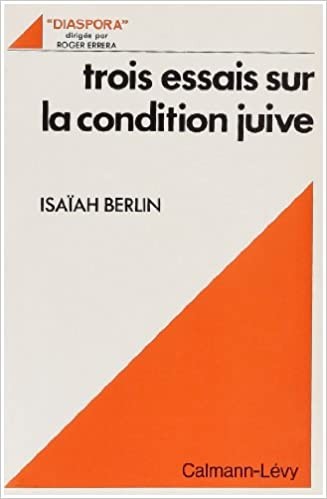
The catalog speaks for itself. It is by no means plethoric, but it strikes by its accuracy, from which emerges, without any preconceived plan, an archipelago in which one circulates without getting lost. One thinks of course of the most brilliant titles. Three books by Gershom Scholem were published, which at last presented to the French public, beyond his work as a historian of Jewish mysticism, the conception of Judaism which underlay it: first of all, two books with some of his most important papers, Fidelity and Utopia, and, above all, Jewish Messianism, in which can be found the most important essay ever written on the Dunmehs. Then, the book in which Scholem narrows his friendship with Walter Benjamin which is an indispensable piece for understanding their works, and for penetrating through them the Berlin Judaism of the 1920s and 1930s in its contradictions and its hopes. It is also here that we find Isaiah Berlin’s acute analyses of emancipated Jews, his portraits of Hess, Marx and Disraeli, and Hannah Arendt’s analyses of anti-Semitism – the same Hannah Arendt that Roger Errera interviewed in New York in 1973, in what remains one of the most important interviews ever given by the philosopher. It was also here that one could access Michael Walzer’s book on the exodus and the politics of the Torah, and, in contrast to it, the portrait of the prophets of Israel sketched out in France by André Neher, another outstanding author in the catalog. The singularity of the Jewish world became more perceptible, all the more so since the challenges it posed to the Christian world, far from being avoided or blunted in an easy conciliation, were tackled head on in other works of the collection.
But it is above all on the historical and sociological level that the title “Diaspora” took on its full meaning. Naturally the modern and contemporary history of the Jews of France at different key moments occupied an important place: Patrick Girard’s work covered the first period of emancipation, from the Revolution to 1860, which coincided with the creation in Paris of the Alliance Israélite Universelle (to whose educational work another title was dedicated), a paradoxical sign of the return of the Jews to politics, outside the framework of the host nation of which they were citizens, but precisely as an active diaspora, conscious of its transnational unity. But this unity in dispersion had to be understood in its most strategic places. To this end, the collection offered a unique view of the situation of Jews in the great world centers, in the Soviet Union, in the United States, and, of course, in Israel.
This is perhaps the most remarkable point: thanks to these publications, it was possible to reflect lucidly on Zionism and its real implications, i.e. on what exactly the creation of the State of Israel changed for the Jews of the Diaspora. To do this, it was necessary to vary the approaches: not only to make available a complete history of Zionism – Walter Laqueur’s synthesis fulfilled this function – but also to free up the space for interpretations of the Zionist project taken over its entire duration, which was provided by essays from alternating Israeli and European voices. This way of considering Israel had no equivalent on the French editorial scene. The fact that the collection took shape just after the 1967 war is no coincidence. It reflected a heightened self-perception on the Jewish side at that precise moment. But it also revealed the questioning aspect, after three lines of thought had intersected: the sudden fear of the possible disappearance of the Jewish state, the self-analysis to which this ordeal obliged all European Jews, whether Zionists or not, and finally the effort to examine the future, since this was now unfolding in the shadow of a victory which, by extending itself into a policy of occupation, could not fail to lead to a crisis of legitimacy that would have to be faced.
Roger Errera’s collection patiently and gradually provided all the means to carry out this necessary reflection in post-Holocaust Europe, a Europe where two thirds of the people had perished, and where Jewish existence was, in spite of everything, regaining strength and growing. The conditions for the emergence of a new Jewish consciousness in France, in the liveliest European center of the continent (because it was demographically the most important, but also because it had the seeds of a consistent Jewish intellectuality) were there. Anyway, this was the case throughout the ascendant period from the 1970s to the 1990s, the golden age of the collection.
As for the Holocaust, it was obviously addressed, but laterally, under certain aspects and by different paths. More than the destruction itself, it was the persecution, and thus the political process that led to it, that was the focus of attention. It is on this line that acts the book of Marrus and Paxton, desired by errera with determination and obstinacy since the launching of the collection. Roger Errera, as a Jew and as a Frenchman, could not accept the fact that Vichy’s effective anti-Jewish policy and its real responsibilities were not known and recognized, that this persecuting and criminal state was not seen as such.

But what kind of Frenchman? Back in Paris in 1945, in an apartment that had been looted, the Erreras rebuilt their lives. The parents renewed their application for naturalization, which they obtained in 1948. The son, for his part, proved himself exceptional: he attended prestigious universities like Sciences Po and ENA, from which he graduated among the first, which opened to him the Council of State, the highest judicial body in the country. Then began a career as a jurist, magistrate, law professor in France and abroad, member of numerous national and international commissions, of the UN Human Rights Committee from 1982 to 1986… The list of the high positions he held is nearly endless. Meanwhile, he published and taught relentlessly on fundamental rights, public liberties, the jurisdictional control of the State and the processes of constitutionalization. In all this topics appeared constantly the themes of racism, anti-Semitism (whether social or State originated), and the question of the oppression of minorities, which the State is always in danger to promote if it is not subject to the law, and if the law does not think of itself from the point of view of human rights, in the formulation given by the Universal Declaration of 1948.
After his death in 2014, the Vice-President Jean-Marc of the State Council, Jean-Marc Sauvé gave a memorial speech. It reminds the imposing work of the man who was described as an “enlightened judge” and a “committed jurist.” It shows what distinguishes him among his peers, and allows us to better understand the style of his commitment: a resolute internationalism and comparatism to probe the law of the State, as well as the rights it guarantees to individuals and minorities. Those who knew Roger Errera only through his collection will discover a first-rate theorist and practitioner in his field of specialization, which is very broad in scope. He also clearly discerns the intention underlying this internationalist trait that sets him apart: to simultaneously consider the State from within and from without, to defend it only under the condition of its strict respect for fundamental rights that no national constitution can capture or absorb. It is then that the name of the collection resounds again: diaspora. But what is exactly this figure of a State Councillor, member of the Jewish diaspora, that is to say of this diaspora whose particularity is that it coincides exactly with the fact of being Jewish? How does he see the state he serves, that is to say, the state he advises, without sparing himself the right to judge it?
He sees it as always capable of failing, with regard to any minority whatsoever. It is therefore necessary to be clear about what he is and has been, about what he does or has done, at every moment in his history and in the most troubled sequences of the exercise of his power. Vichy must be judged, with full knowledge of the facts, with regard to the rights of the Jews he violated: those of foreign Jews of all origins, including the Jews of Salonika, whose internal diasporic constitution was particularly dense and intense; but also those of integrated Jews, of French nationality, who were targeted in their turn.
A Jew born French, integrated in France, and whose integration is illustrated by a trajectory that is difficult to match in its perfection and the high public responsibilities that it entails, Roger Errera was not, however, intoxicated by it: he always wrote, judged and reflected from the angle of the diaspora which, by definition, does not have a state of itself. He carried it in his heart like the trace displaced in France of the community of Salonika. In addition, as a luminous face – neither obscure nor hidden – of his integration, there was his collection, in which something essential was translated in his eyes and for himself.
In the interview with Hannah Arendt, the interviewer, who never appears on the screen, but whose clear and calm voice regularly intervenes, asks the philosopher about her opinion on the book by the sociologist Georges Friedmann, The End of the Jewish People? (Gallimard, 1965) and his hypothesis according to which, as soon as the State of Israel exists, the Jews have no other choice than to join it, or to remain in other States and to assimilate and finally disappear. Arendt’s answer is worth quoting: it is, she says, a “highly plausible” hypothesis, and “completely false.” A little further on, she adds: the Jews cannot assimilate, because they are essentially a people in exile, a diaspora. If they could assimilate, “it would have happened long ago.”
One might venture this comment: “highly plausible” is Friedmann’s hypothesis, because it would be valid for any other diaspora placed in a similar situation, in a position where it finally can find its state and join it. On the other hand, this same hypothesis is “completely false” for the Jewish diaspora, because in this case, “diaspora” takes on a unique meaning, consubstantial to the people. Two consequences follow: firstly, it is obviously necessary to rethink the Jewish state, Israel – of which Arendt says in the same interview that it is “de facto” the representative of the Jewish people on the stage of the nations, “whether we like it or not.” To think of it as a new form of state, insofar as its people essentially, and not incidentally, overflow it. Then, we must consider that, in this case, assimilation is illusory. Of course, it can happen individually, case by case and locally, in some isolated point of the collective that the Jews constitute; but it cannot be valid massively and globally as a common future. Here again, one can only acknowledge this fact in the light of their history: this is how the Jews are made.
It is easy to imagine that Arendt’s answer encountered a deeply rooted conviction in her interviewer. Her question, in fact, implied that there is a decisive and valuable difference to be maintained between integration and assimilation, because the former is not a point of incompleteness on the way to the latter, but a state which has its own structure and its virtues. For the Jews who, even though there is a State made for them, are essentially a diaspora, it happens that integration is given precisely as a diasporic gesture. Therein lies the singularity and the value of their contribution to the life of the nations in which they are scattered, beware of the risk of what their states may always become, every one of them without any exception. Diaspora, in short, is not only the name of dispersion. It is also the name of a vigilance that does not fail.
Bruno Karsenti

